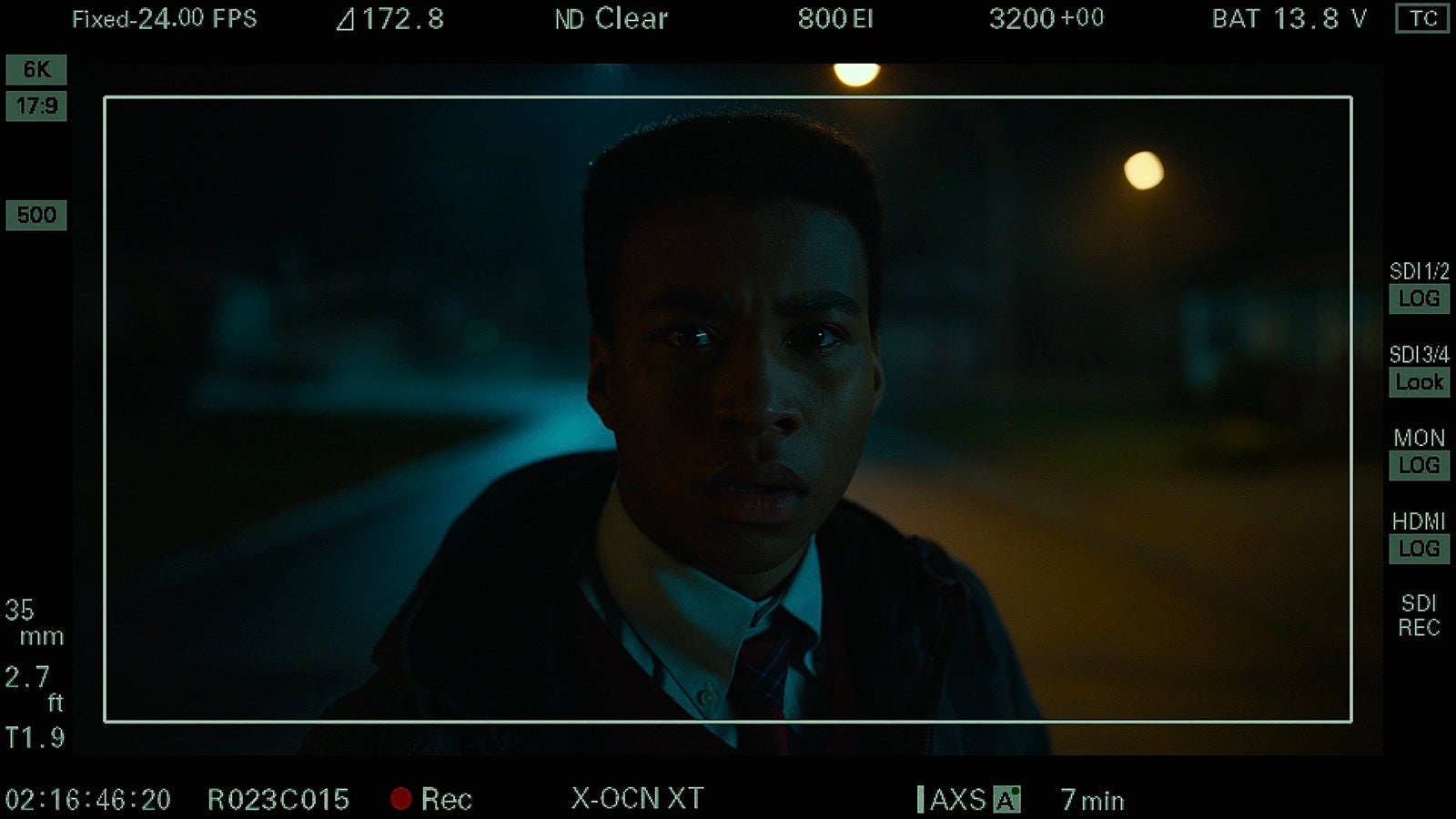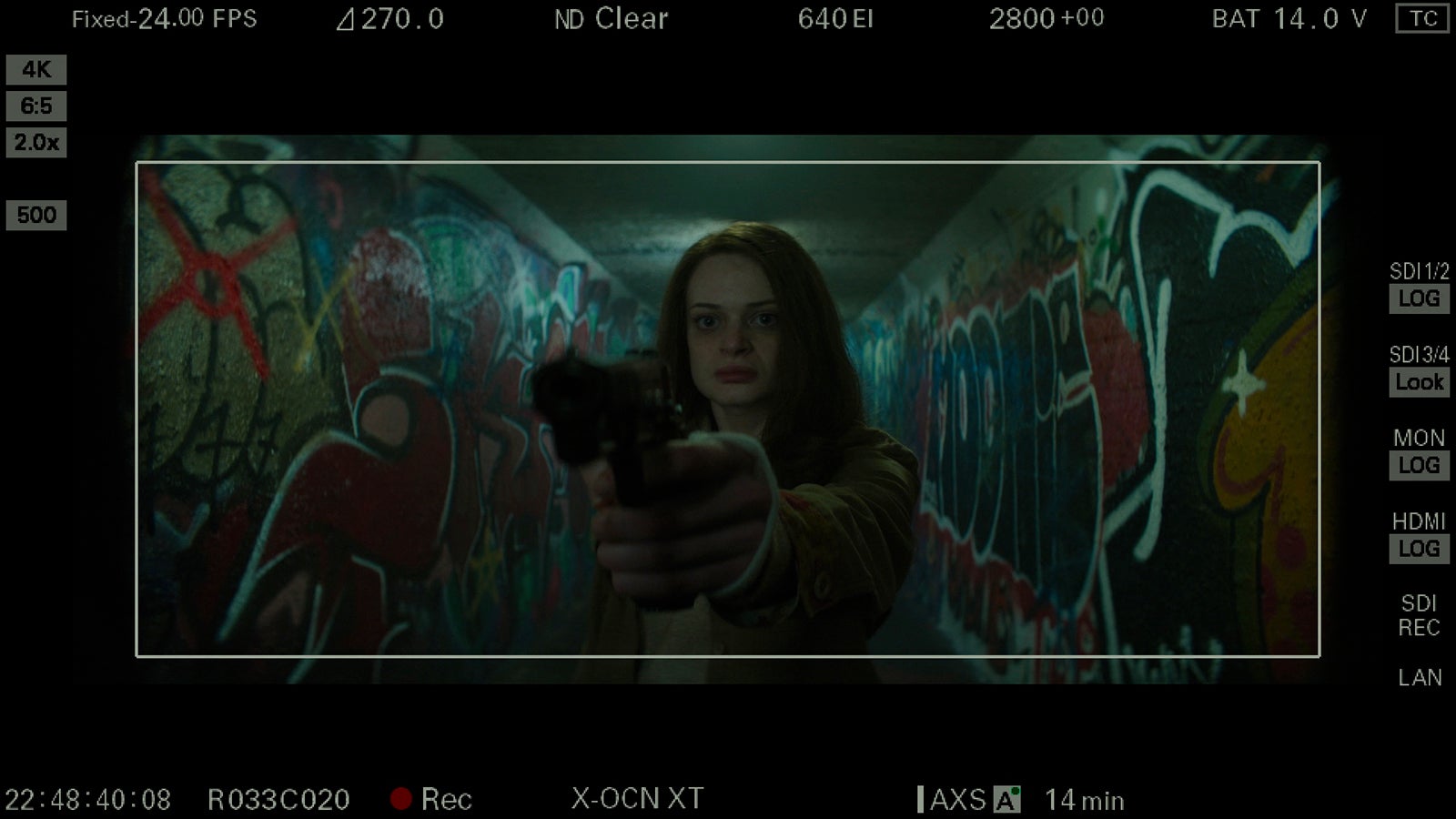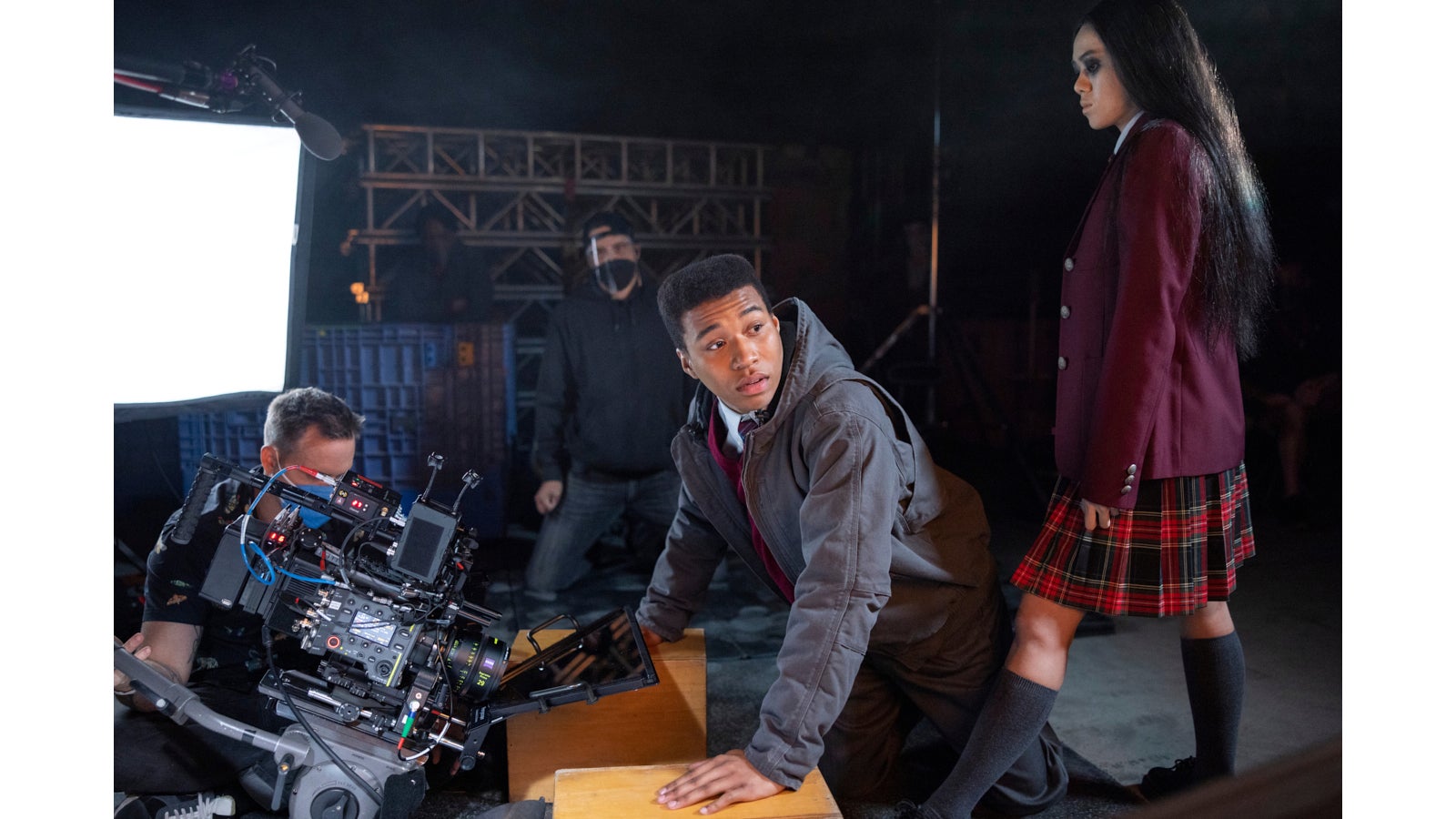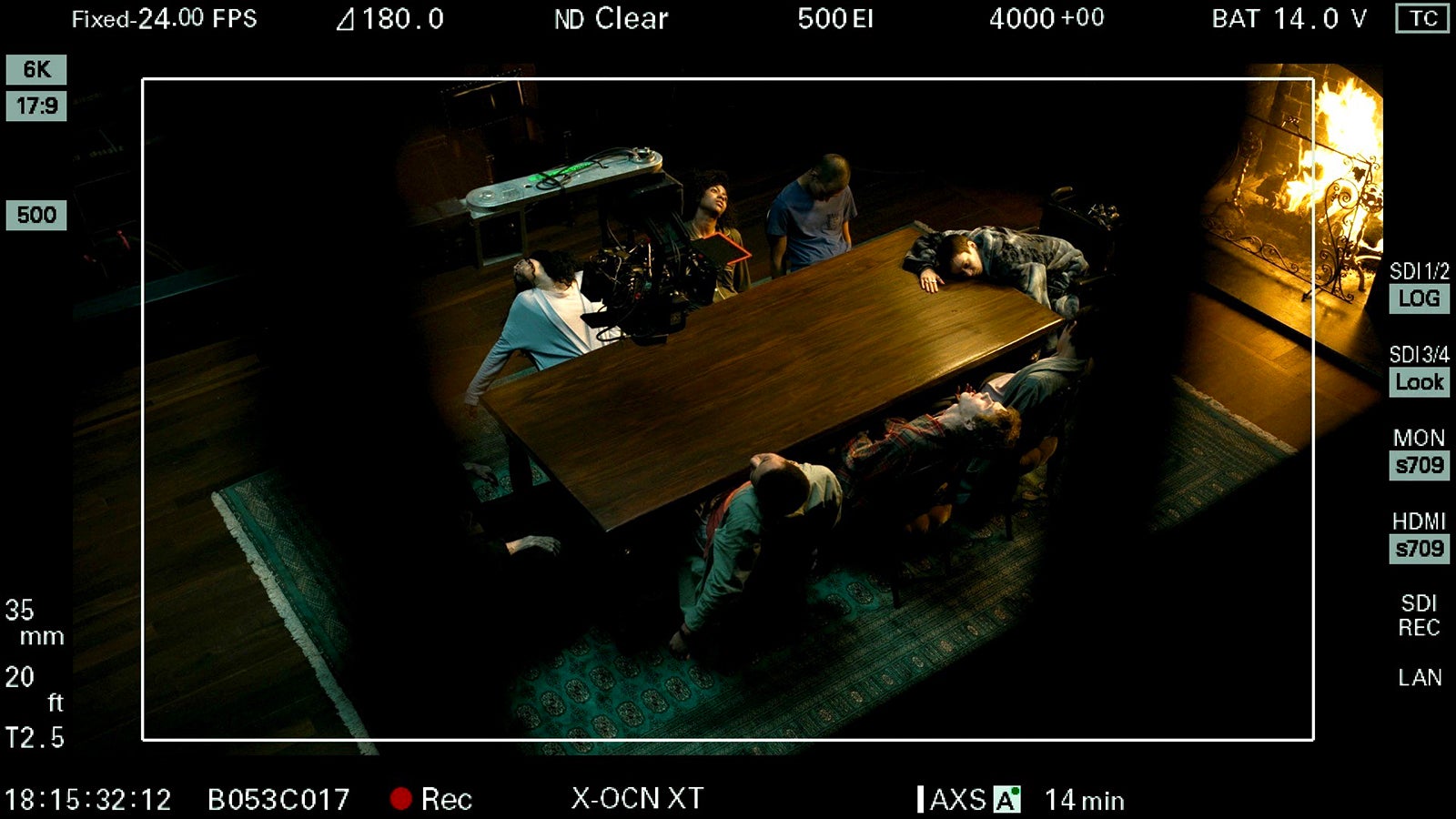
10-20-2022 - Case Study, Gear, Technology
Shot on VENICE: How James Kniest Splices Fear and 1980s Cinema to Terrifying Effect in 'The Midnight Club'
By: Oakley Anderson-Moore
The Midnight Club just broke a Guinness World Record for the most jump scares in an episode. It could have also broken a record for the most aspect ratios, lenses, and looks in a single show.
James Kniest's cinematography has been behind the signature style of some of your favorite horror flicks, beginning with the iconic Annabelle to the Mike Flannagan pictures HUSH and The Haunting at Bly Manor.
His latest work, The Midnight Club, a Netflix series where eight terminally ill young adults meet each night to tell scary stories, is truly a masterclass in cinematography. It features four different aspect ratios, a different look for each of the 10 episodes, and a dizzying list of lenses that spans spherical, anamorphic, full frame, and Super 35. How did Kniest pull that off? With a gift for storytelling and the Sony VENICE.
Watch the trailer for the brand new series now streaming on Netflix, and hear about Kniest's unusual process below.
James Kniest didn't start off with the intention of becoming a master of the horror genre.
"That was never my plan, to be honest with you."
Kniest actually got started in documentary and underwater cinematography.
"I had a conversation with Pete Romano, who started Hydroflex, and he told me, 'You've got to go study underwater filmmaking with Ernie Brooks.' So that's what I did."
So how did he end up here? Kniest was living in Santa Barbara in the 90s, bartending his way through underwater photography and cinematography at the Brooks Institute, when he ended up just getting on whatever production came to town. "I got on as a grip, an electric, a camera assistant, a still photography assistant. I even did wardrobe on a show. I was a stand-in. I did location scouting. I was able to get a close-up look as to how commercial and narrative production worked, and just really fell in love with lighting.
Kniest then spent nearly 20 years, primarily in commercials, as a gaffer and DP. "And then silly me, one day I said I want to tell real stories."
Kniest got the opportunity to do that when director John Leonetti, ASC, offered him the chance to shoot Annabelle. "He gave me a shot to do it, and it turned out to be a fairly iconic horror film," recounts Kniest. "It just started rolling from there."
And not to worry, Kniest still gets plenty of opportunities to use his underwater cinematography skills, like in the terrifying underwater scene of the final episode of American Horror Stories, starring Alicia Silverstone.

James Kniest, center
How Kniest came up with The Midnight Club's outrageous visual style
Kniest has a history with Mike Flanagan, the creator of The Midnight Club. Kniest had made Hush with him, a film that first solidified Flanagan's relationship with Netflix. Kniest continued to work with Flannagan on more fan favorites like The Haunting of Bly Manor and Midnight Mass. In fact, it was during the production of Midnight Mass that Flanagan and Kniest began talking about this next project.
"We have this language, this relationship," says Kniest about talking to Flanagan. "The coolest and most exciting thing for me with The Midnight Club is the variety offered. If you watch the series, you'll see that these terminally-ill kids are living in a hospice together. And I think part of their self-created therapy is to meet every night and tell each other scary stories. We came up with this concept to make each one of these stories look different. So each episode has an entirely different story, which in itself requires an entirely different look, and some 'stories' even have several looks within them."
For Kniest, coming up with the looks meant referencing different films from the '80s and '90s, like Terminator or Nightmare on Elm Street.

"Part of the inspiration was to hearken back to iconic movies that these young people would've used as motivation or as inspiration to tell their stories. So we leaned into the look and feel of some of these movies. And in those references, we got into this aspect ratio conversation."
Since aspect ratios played such a huge stylistic role in the films from that time period, it was a natural fit to use that tool to define stories in The Midnight Club. The trick was figuring out how to shoot this way with the Netflix 4K resolution mandate.
"That's one of the things that led to choosing the Sony VENICE," explains Kniest. "We were able to shoot all these different aspect ratios with different lenses and meet the resolution mandate because we could scale if the aspect ratio was 1:85 or 2:39 or 1:66 or 1:33 or scale according to whether it's anamorphic, spherical, Super 35, full-frame. The VENICE was so important in terms of being able to access all the lenses. I mean, the lens list is crazy. From Hawk V-Lite anamorphics to Summilux-C primes, Vantage One primes, anamorphic zooms. There's a gentleman in LA named Tim Arasheben, who's making these incredible lenses called MasterBuilt Lenses. He's finding and sourcing different glass and custom building all these full-frame lenses. I am very enamored with his glass and love his passion for making something special.
The only way to really make this work and have access and employ all these different lenses was to use the Sony VENICE, because at that time it was 5.7K, and we could scale accordingly and still get 4K. I found the VENICE to be super robust in being able to handle all these different builds. We could build it in any form we needed to and make sure that it was very usable in all aspects. It worked out really, really well. For me, that was the starting point of the Sony VENICE."

Shooting horror in a frightening time (early COVID)
The Sony VENICE was the only way to make the multitude of lenses and aspect ratios work. It also ended up being incredibly important for shooting during the pandemic, pre-vaccine. But the truth is that Kniest was a little hesitant to learn a new camera platform on such a demanding show.
"I hadn't really had much experience with the Sony VENICE," describes Kniest. "I'd shot other Sony cameras coming up through the years, and some of my personal cameras are Sony, but I'd never really used the VENICE. In the rumor mill out there, everyone was always kind of expressing concern for noise levels in the VENICE. And it gave me some trepidation."
So Kniest started by doing some test shoots to find out for himself.
"It turned out to be absolutely fine. No issues, none whatsoever. I was cognizant of it early on, for the most part, but then I started to relax and not stress so much about it, because of the camera's dual ISO. If I ever got into a situation where I was concerned, I would just re-rate it at 2500 and give myself another two-plus stops."
It turned out that in addition to the dual ISO, the internal one-stop ND's on the VENICE became surprisingly important on set during COVID.
"On The Midnight Club, I think we were the first big show back during COVID, and it was a pain in the butt," says Kniest. "There were very limited people on set. Only certain people were allowed to be around other certain people. So you couldn't just run on set and change the filter. It was really tedious. But being able to control the camera from my DIT tent with ISO, shutter angle and one-stop internal NDs, all with the touch of a remote button, was paramount in terms of speed, agility, and making sure that we were always properly exposed."
As Kniest explains it, that changed his working style on all productions going forward.
"It's a lot faster. I think it fits narrative work, especially the episodic paradigm, because it gives you so much controllability right at the tip of your fingers. A large part of a cinematographer's job in the episodic world is to make the day and to stay on schedule. But in 20 years, you're going to watch the show, you won't remember we went to lunch 6 minutes late. You'll go, 'oh, It was out of focus, or I didn't get a chance to change the filter, give my focus puller more stop.' So all these things about the VENICE make it so user-friendly and so viable for episodic work. They are things that logistically became really, really important to me because of the process. And that was backed up by the look. Like, skin tone is amazing, the color space is amazing, the resolution is amazing. And even now with the VENICE 2, it just opens up the world for a lot of options and takes away a lot of the stress."

Lighting tools are evolving so quickly, now too many options can be a problem
As Kniest describes, a lot of the cinematographer's job today is execution and management, and a lot of the creativity happens in pre-production when deciding how to tackle a scene and with what tools.
"Something that I find super helpful are helium lighting balloons," says Kniest of one of his favorite tools on the set of The Midnight Club.
"You get a nice spread of light. You can move them around easily. You're not fighting stands the way you do with a big light source or the base of a condor. That can limit your two-camera coverage to some degree. With a balloon, floating it around till you find the right spot. "
Interestingly, Kniest also used unmanned lifts on The Midnight Club, something that he's seeing a lot more on sets these days.
"We're sending lifts up unmanned, and we're putting remote lighting heads in the basket, "movers", they are called, We now have moving lights up there so that we don't actually have to have a guy up there to pan and tilt and flood the lights. We can do it from an iPad. It opens up the world creatively too because you can change colors easily, whether to match an existing streetlight or to fine-tune it to match another light you are using, like an HMI or tungsten unit, or a practical light you can't control. With these LED lights, you have a rainbow of colors you can choose from."
Sometimes, Kniest admits, having an unlimited amount of color options can be almost more of a challenge.

"Before, you probably had one gel, and that was it, and you lived with it," he jokes. "I got to play with colors a lot on this show. The 'A' story stays pretty neutral and kind of real-life. But the 'B' story on each episode, we really pushed the envelope and could be as stylized as we wanted. I brought in a lot of color, which I think paid tribute to the cinema from the 80s, which had a lot more saturated colors, blue nights and lots of neon. So when you see the series, you'll see there's a lot of color in the 'B' stories."
If you can, see if you can guess which classic 1980s - 1990s films are being referenced in each episode. In fact, in the first episode, Kniest shared that there are about six different looks to notice.
As for other tools, Kniest adds that another huge advantage to the Sony VENICE is the Rialto extension system.
"Especially in the genre work that I do, we're oftentimes on real locations, practical locations, confined spaces, cars. We're also working with remote heads a lot these days. So being able to use [VENICE] in Rialto mode and to change it over [to that mode] really quickly is so important. I mean, I used to stress about car work. Everybody wants that frontal shot of the driver or the passenger looking back from the windshield or the front of the vehicle, but rarely do we want to take the time to build a hood mount and shoot through the glass and deal with all the other elements, reflections and lighting and weather. And now we can, for the most part, go Rialto. We can easily mount the camera inside the car, on the dashboard, and even over the shoulder from the back seat."

Why everything comes down to respect for your crew and the final image
Kniest is one of the rare cinematographers who has worked almost every position on crew. And while he is moving into new territory (like action movies) with every production, he is resolute on what's really important.
"Something that's important to me is that the best idea wins," concludes Kniest. "We're only as good as our weakest link, and we're there to help elevate each other. So you have to rely on each other to help elevate the project. That's my mentality, whatever's best for the show.
I also think it's important to set the stage so that everybody down to the PAs and crafty and the grips and electrics and all those people are respected for the job that they're doing. Every department head needs to set a tone that it's an enjoyable work environment and that they're respected. Otherwise, what's the point? I mean, we work way too many hours, away from home and family. You might as well have a good time.
Lastly, the picture is forever. Everybody has their agendas. My agenda is to make images that we can all be proud of for years to come and enjoy the process. Especially the way things are archived now, you can go on Netflix and watch stuff that was made 20 years ago. So it really needs to hold up."
Stream The Midnight Club on Netflix, and see how many iconic films and distinct looks you can find.





